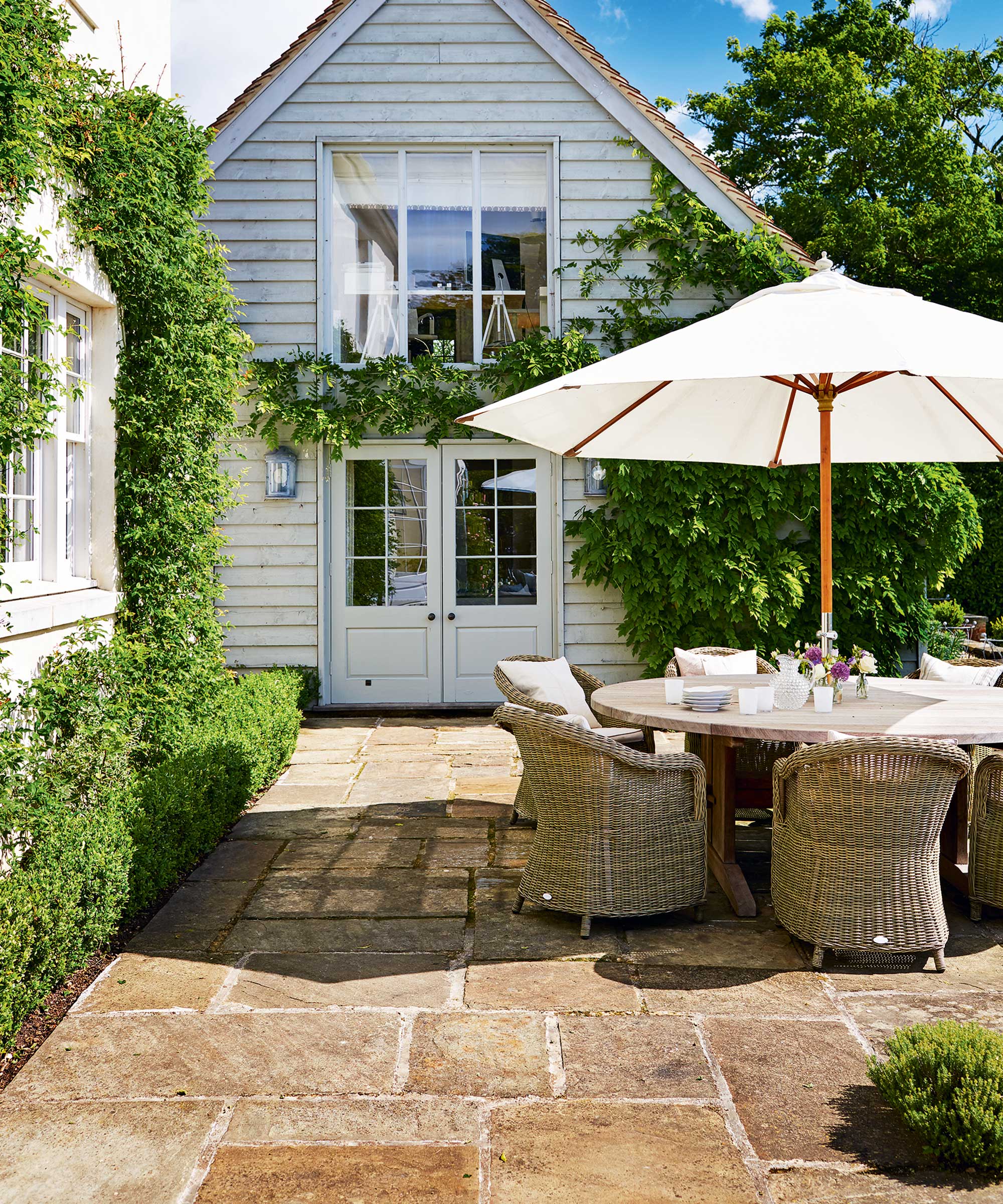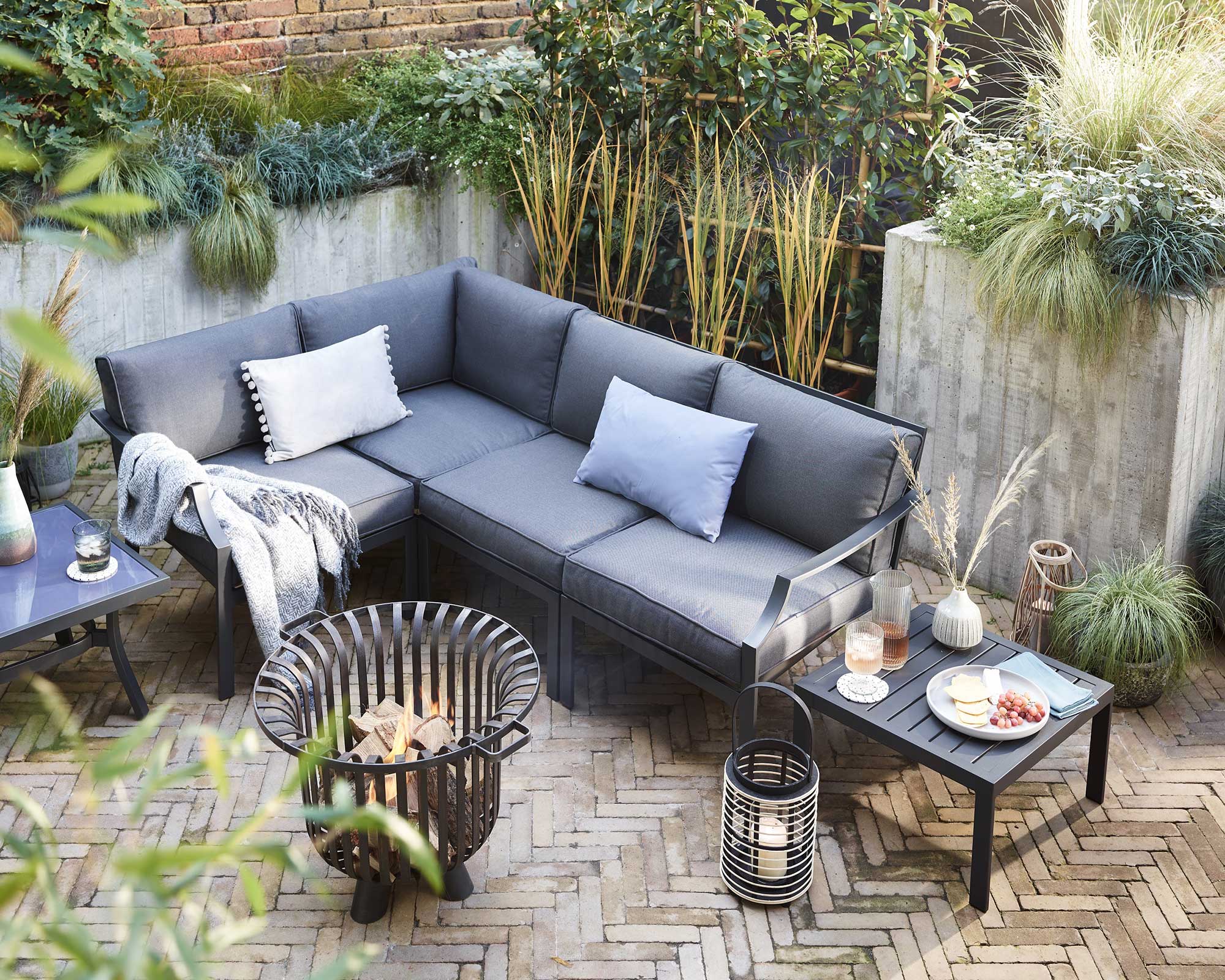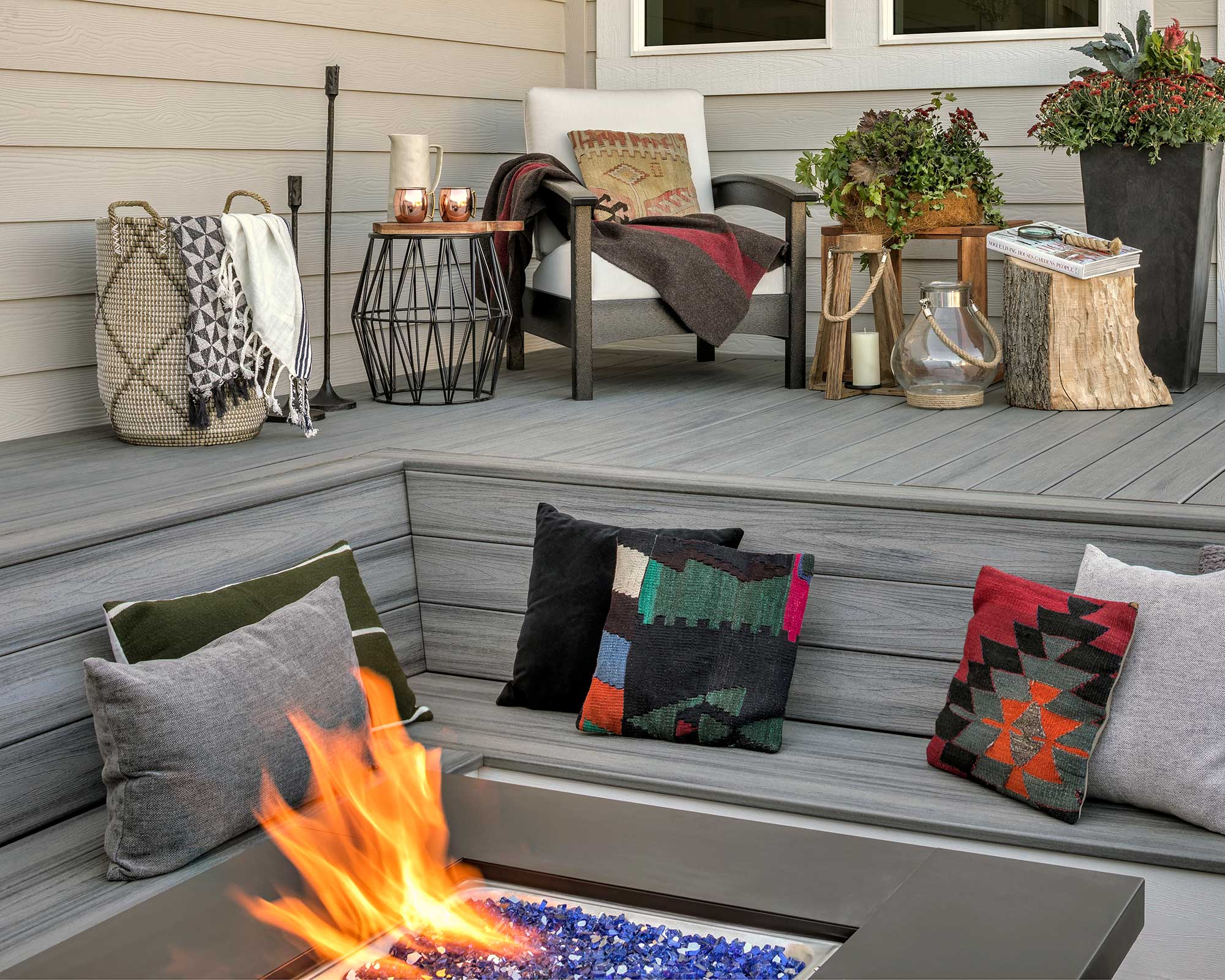Patio vs deck – which is best for your garden?
Trying to pick between patio vs deck? We round up the pros and cons of each to help you decide


You're bound to be wondering which is better in terms of patio vs deck if you're planning a new seating space in your plot.
Patio ideas revolve around paving, and there are so many different styles available. From natural stone to sleek porcelain, they've been a go-to garden solution for years, providing a stable floor for outdoor furniture.
But, decking is proving increasingly popular as an alternative, especially with the latest composite designs which are ideal for low-maintenance style. So which is best for you? Well, to help you pick, we've spoken to the experts and rounded up the benefits and drawbacks of each to help you compare.
Patio vs deck – get it right with our guide
You'll soon feel better prepared to make the important decision between patio vs deck with these tips. And once that's sorted, you can focus on the fun part of choosing which fabulous patio or decking ideas you want to bring your ground cover of choice to life.
The pros and cons of choosing a patio for your plot
For garden patio paving, three main materials are generally used. As Cass Heaphy of Paving Direct explains, these are concrete, natural stone (limestone, sandstone, granite, and slate), and porcelain paving slabs, which all include a range of different styles.
More aesthetic variety
The variety of paving available for patios is wider than that of decking. With such a broad spectrum of options, you can choose one that really complements the rest of your garden, whether that's warm-toned slabs for a Mediterranean-style plot, a traditional cobbled look for cottage-garden schemes, or pale porcelain paving that's ideal for contemporary spaces.
In fact, even if it's a natural timber look you're after, there are many highly realistic wood-effect porcelain 'plank' pavers available, as Cass notes. What's more, porcelain pavers can also be used indoors, so they work well if you want to create a seamless sense of flow with one continuous floor across your interior and exterior.
Add on all the different formats, amount of grip underfoot, and even different grout colors, and you can really tailor the result to match your vision, if your budget allows.

It can be cheaper – but not always
'When deciding between a patio or deck, you are going to of course consider the cost of the materials and what is the most appropriate for you,' Cass says. Out of the three leading materials for patios, porcelain tends to be the most expensive, with natural stone closely behind depending on which type you go for. Concrete slabs are the cheapest, and as a result, are often a go-to option for a budget patio.
In terms of decking, softwood timber designs are generally budget-friendly, while the more-durable hardwood and composite designs can be very expensive.
Therefore, it's hard to weigh this one up without specific products in mind, as costs vary so much. You can learn more about the costs of decking and the costs of a patio in our dedicated features.
More durable and less maintenance than timber decking
'If you have a quality material that is installed correctly and maintained over time, you can get a lot of life out of your patio,' says Cass.
Patio paving isn't prone to rotting or warping, which makes it certainly more long-lasting than timber decking. And although you will need to clean your patio from time to time, annual weatherproofing isn't really necessary as it is with wooden boards. 'Paving offers low maintenance, especially porcelain paving, which requires very little maintenance at all – occasional sweeping and a wash down with soapy water once every six months would suffice,' says Cass.
In terms of specific materials for patios, porcelain paving is the winner for durability. 'It is waterproof and frost-resistant, while also benefiting from UV-protected pigments, meaning it is unlikely to bleach in the sunlight,' Cass says.
Patios also tend to be stronger in general – there's a reason why you don't often see decking used as a driveway material.

Safer around fires
Another plus point of having a paved patio is that it tends to be a safer base for patio fire pit ideas and BBQs, as most will not be flammable. However, you may wish to put down a flame-proof buffer between the two to protect any staining of your patio, particularly if you've chosen a light shade.
Takes longer to install, and can be trickier to repair
If you're handy with some DIY skills, both are possible to build yourself – our features on how to build decking and how to lay a patio will guide you through the steps.
However, patios tend to take longer to install than decking by 10–20%, according to Cass. This is because there is more groundwork involved.
Harder surface – which can be a downside for family gardens
Paved patios are, by nature, often harder than decking. This might mean it's less a suitable option if you're looking to design a child-friendly garden.

The pros and cons of choosing a deck for your space
Timber is the classic material for decking, in either softwoods or hardwoods. Composite decks, however, are proving increasingly popular these days, and are made from wood fibers and (often recycled) plastic.
A rustic look that suits all garden styles
For some, the aesthetic of real wood simply can't be beaten. Its organic charm fits right in with all types of plots – from country-cottage schemes and oceanside themes to contemporary spaces.
The base colors available for timber decking are more limited than the options you get with paving, says Cass. However, tinted stains or paints can be used to add a sense of character. Black decking, for instance, looks stunning in a modern garden and will help surrounding plants stand out.
And if you opt for a composite deck, there are plenty of looks to choose from, from sleek, wood-grain designs in pale hues to textural, naturalistic styles that replicate timber beautifully.

Installation is easier
'A DIY decking installation is relatively straightforward,' says Cass. And if you get a professional to build it for you, it should be relatively quick.
Patios, on the other hand, take longer, mostly as you'll need to lay a flat concrete base first. It's also worth noting that the use of concrete makes them less environmentally friendly.
What's more, decking is ideal for creating raised levels – of various heights. Because of this, it's great for giving an awkward, sloping plot a sense of structure by turning it into a tiered garden. It's much more difficult and time-consuming to create a raised patio.

Can be more slippery underfoot
'Decking absorbs water, making it slippery and icy in the winter,' says Cass. In rainy regions, such as the UK, this can be a potential hazard. It can, however, be treated to reduce absorption, Cass adds, although this requires upkeep on your behalf for it to remain effective.
That's not to say that paving can't be slippery too – if you don't choose the right type of slabs. Composite decking, on the other hand, is often made to be non-slip, so is a popular choice for pool decks.
Overall, this is a factor to consider with whatever ground cover you go for.
Higher maintenance – unless you go for composite
Timber decking has a shorter lifespan than paving and requires more maintenance, says Cass. 'You will have to regularly treat the decking to extend its lifetime to its full potential.'
Composite designs, however, are very good for low maintenance garden ideas as they hardly need any special care at all.
Paved patios mostly just needs a clean now and again, although can be prone to cracks. Repairing paving is often a bigger job than repairing a decking board. With decking, 'simply buy another board and exchange it for your old one that needs replacing. A saw and a screwdriver are all you need,' says Karl Harrison – pro landscaper and Trex decking expert.
'To change porcelain or natural paving is a major effort, requiring specialist tools, and may take hours,' he adds.

Is a patio or a deck better around a swimming pool?
'The best for your swimming pool is what best works with the design – the norm for traditional pools is stone or porcelain,' says Karl.
'Paving is less prone to ice and moisture slip hazards,' adds Cass, 'with porcelain paving having the best anti-slip properties – it is impermeable, so water and ice cannot get into the material.' Plus, their sleek look is perfect for creating a base for your pool patio ideas.
However, more and more pools have decking now, especially composite designs, Karl notes, which also tend to be non-slip.

Which is more environmentally-friendly, decking or a patio?
There are eco-friendly options with both decking and patios.
For instance, many composite decks are made with recycled materials. If choosing timber, be sure that you only use wood from ethical sources that use responsible forestry practices.
Likewise, if you choose paving for your patio, be sure to check that it's been sourced responsibly. Choosing a local stone is worth considering – it'll cut down on air miles and is often cheaper, too. You can also invest in permeable patio paving which is better for the environment as it will help rainwater absorb into the ground rather than flow into storm drains. Our guide on eco paving tips has lots more advice.

The garden was always a big part of Holly's life growing up, as was the surrounding New Forest where she lived. Her appreciation for the great outdoors has only grown since then. She's been an allotment keeper, a professional gardener, and a botanical illustrator – plants are her passion.
